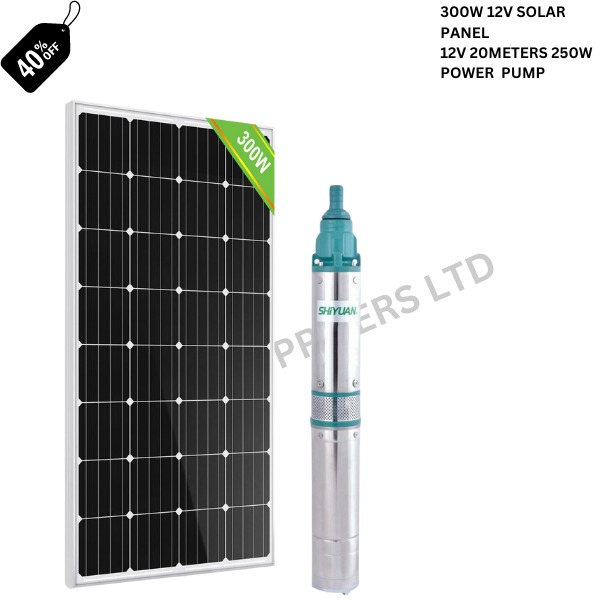Description
The Shiyuan DC pump you've selected, designed to operate at 12V with a maximum head of 20 meters and boasting a power rating of 250W, appears to be well-matched with your 300W solar panel. This setup holds promise for delivering reliable water pumping capabilities using solar energy. However, to ensure optimal performance and efficiency, it's essential to delve deeper into various factors influencing the system's operation. While the power rating of your chosen solar panel exceeds the pump's power requirement, it's crucial to consider real-world conditions. Solar panels are subject to variations in sunlight intensity throughout the day, as well as seasonal changes and potential shading from nearby objects like trees or buildings. These factors can affect the panel's output, potentially resulting in power fluctuations and impacting the pump's performance. Moreover, efficiency losses occur at various stages of the energy conversion process, from solar radiation to electrical power output and finally to mechanical work performed by the pump. These losses can arise from factors such as imperfect alignment between the panel and the sun, electrical resistance in the wiring, and inefficiencies in the pump itself. Consequently, the actual power available for driving the pump may be lower than the panel's rated output. Given these considerations, it's prudent to assess whether the 300W solar panel can consistently provide sufficient power to meet the pump's needs under typical operating conditions. Depending on factors such as the pump's duty cycle, the required flow rate, and the duration of sunlight exposure, you may find that additional panels or a supplementary energy storage solution, such as a battery bank, are necessary to ensure uninterrupted operation, especially during periods of reduced sunlight. Furthermore, implementing monitoring and control systems can help optimize energy utilization and performance, allowing for adjustments based on real-time conditions. Regular maintenance, including cleaning the solar panels to maximize sunlight absorption and inspecting the pump for any signs of wear or damage, is also crucial for sustaining long-term reliability and efficiency. By carefully considering these factors and taking proactive steps to address potential challenges, you can maximize the effectiveness of your solar-powered water pumping system, ensuring a consistent and sustainable water supply for your needs.




